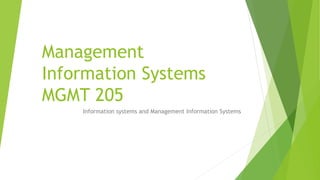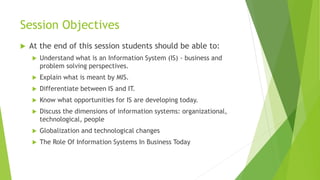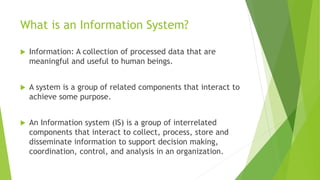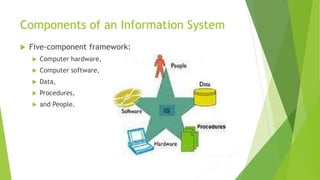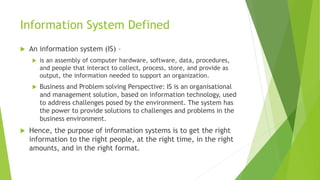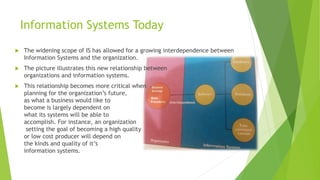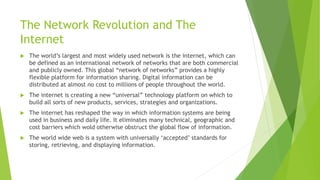This document provides an overview of information systems and management information systems. It defines key terms like data, information, and the components and functions of information systems. It explains that information systems collect, process, store, and disseminate data to support decision making while management information systems help businesses achieve their goals. The document also distinguishes between information systems and information technology and discusses how globalization and new technologies are changing businesses and enabling the digital firm.
